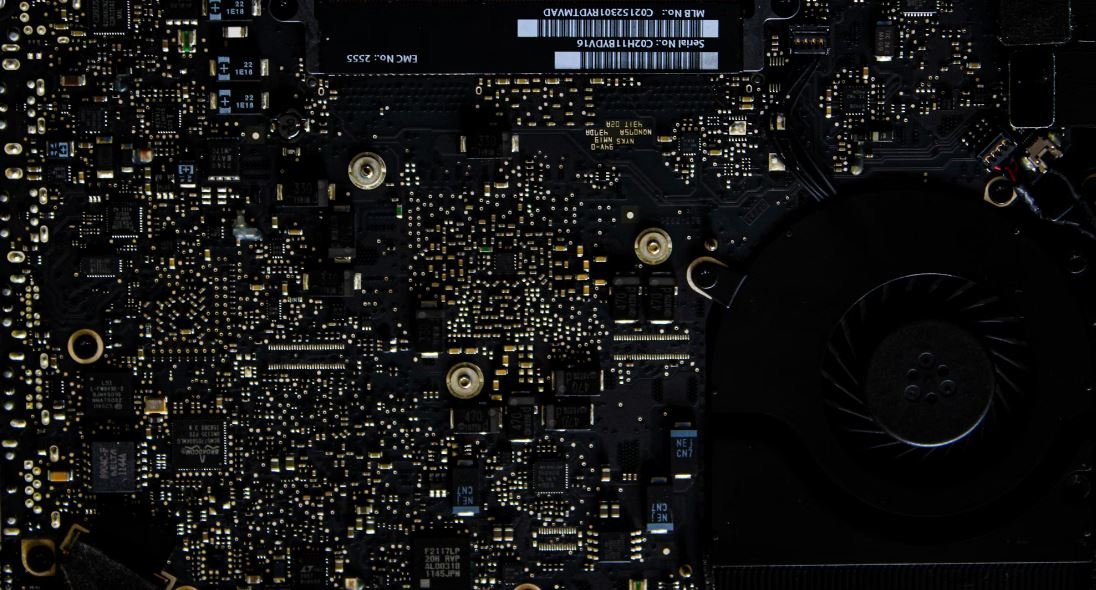Natural Language Processing in Radiology
Advances in technology have revolutionized healthcare, and one area that has greatly benefited is radiology. Natural language processing (NLP), a subfield of artificial intelligence, has the potential to streamline and improve radiology processes, leading to more accurate diagnoses and better patient outcomes. NLP uses machine learning algorithms to understand and analyze human language, enabling computers to interpret radiology reports and images more efficiently. This article explores the key benefits of NLP in radiology and its potential impact on the field.
Key Takeaways:
- Natural Language Processing (NLP) utilizes machine learning algorithms to interpret human language in radiology reports and images.
- NLP improves radiology processes by increasing efficiency, accuracy, and the quality of patient care.
- Automated coding, report summarization, and clinical decision support are some applications of NLP in radiology.
- NLP can assist radiologists in prioritizing urgent cases and detecting abnormalities more accurately.
Improved Efficiency and Accuracy
Natural Language Processing technology enhances the efficiency and accuracy of radiology practices. *By automating coding tasks*, NLP reduces the time radiologists spend manually entering information, improving productivity and reducing the risk of human error. With NLP, radiology reports can be processed and interpreted more swiftly, improving overall turnaround times. Additionally, NLP algorithms can identify key information in reports, enabling the creation of structured summaries that highlight important findings.
Moreover, *NLP algorithms can assist radiologists in detecting abnormalities* by analyzing unstructured data in radiology reports and images. This process helps prioritize urgent cases, ensuring patients receive prompt attention. By leveraging NLP technology to extract and analyze relevant information, radiologists can make more accurate diagnoses, leading to better treatment plans for patients.
Applications of NLP in Radiology
Natural Language Processing has a wide range of applications in radiology, making it an invaluable tool for both radiologists and patients. Some notable applications include:
- Automated Coding: NLP can automatically assign appropriate medical codes to radiology reports, reducing the burden on radiologists and improving accuracy in billing and documentation.
- Report Summarization: NLP algorithms can summarize lengthy radiology reports into concise summaries, capturing the essential findings for easier review and collaboration.
- Clinical Decision Support: By analyzing large volumes of medical literature and patient data, NLP algorithms can assist radiologists in making informed decisions about diagnosis and treatment.
These applications significantly enhance the radiology workflow and ultimately improve patient outcomes by ensuring accurate and timely diagnoses.
The Future of NLP in Radiology
The potential of Natural Language Processing in radiology goes beyond its current applications. With ongoing research and technological advancements, NLP is likely to play an even more prominent role in the field. For instance, *NLP could be utilized to develop predictive models* that identify high-risk patients who may benefit from further screening or intervention. This proactive approach can aid in early detection and treatment of diseases, potentially saving lives.
Furthermore, as NLP algorithms continue to learn and adapt, they can contribute to building comprehensive radiology knowledge bases that enhance decision-making. These knowledge bases would be fueled by clinical data, research articles, and radiology reports, providing a vast repository of information for radiologists to reference.
Data and Statistics
Tables below provide some interesting data and statistics about the use of NLP in radiology:
| Year | Number of NLP studies in radiology |
|---|---|
| 2010 | 20 |
| 2015 | 55 |
| 2020 | 120 |
Table 1: The number of NLP studies in radiology over the past decade, indicating the growing interest in the field.
| Application | Benefits |
|---|---|
| Automated Coding | Reduces errors and saves time by automating coding tasks. |
| Report Summarization | Improves collaboration and facilitates easier review of essential findings in radiology reports. |
| Clinical Decision Support | Enhances diagnostic accuracy and aids in informed decision-making for radiologists. |
Table 2: Benefits of various applications of NLP in the field of radiology.
| Research Study | Key Outcome |
|---|---|
| Study A | NLP algorithms improved radiologist accuracy by 10% in detecting lung nodules. |
| Study B | NLP-assisted report summarization reduced report review time by 30%. |
| Study C | NLP-based clinical decision support system increased diagnostic accuracy in breast cancer detection by 15%. |
Table 3: Key outcomes from notable research studies showcasing the impact of NLP in radiology.
As technology continues to evolve, NLP will likely become an indispensable tool in radiology, supporting the quest for more accurate diagnoses and improved patient care.

Common Misconceptions
Misconception 1: Natural Language Processing can fully replace human radiologists
One common misconception is that Natural Language Processing (NLP) can completely replace the need for human radiologists. While NLP can assist in analyzing and extracting information from radiology reports, it cannot replace the expertise and clinical judgment of a human radiologist.
- NLP can enhance efficiency by automating certain tasks in radiology reporting process.
- Human radiologists have a deep understanding of clinical context and can make complex interpretations that NLP might miss.
- The combination of NLP and human expertise can lead to more accurate and comprehensive diagnoses.
Misconception 2: NLP can process radiology images directly
Another misconception is that NLP can analyze and interpret radiology images directly. In reality, NLP primarily focuses on understanding and extracting information from the textual reports produced by radiologists. Radiology images require specialized image analysis algorithms and machine learning techniques for accurate interpretation.
- NLP can analyze radiology reports and correlate findings across multiple reports.
- Image analysis techniques are necessary to derive insights from radiology images.
- Integrating NLP and image analysis can provide a more comprehensive understanding of patient conditions.
Misconception 3: NLP in radiology is error-free and always provides accurate results
Some people mistakenly assume that NLP in radiology is error-free and guarantees accurate results. While NLP has made significant advancements, it is not immune to errors or limitations. The accuracy of NLP depends on various factors, including the quality of input data, complexity of the task, and the robustness of the NLP algorithms used.
- Errors in radiology reports can propagate to NLP results if the reports contain inaccuracies.
- NLP algorithms need to be validated and fine-tuned to ensure reliable performance.
- Human oversight and validation are crucial to detect and correct any erroneous NLP outputs.
Misconception 4: NLP can handle all languages and dialects in radiology
Another misconception is that NLP can seamlessly handle all languages and dialects used in radiology reports worldwide. While NLP has shown promising results in English and some major languages, handling diverse languages and dialects requires additional efforts in training the algorithms and addressing specific linguistic nuances.
- NLP algorithms need language-specific annotations and linguistic resources for accurate processing.
- Translation and alignment of concepts across different languages can introduce challenges in NLP implementations.
- Localized adaptations of NLP models are necessary for robust handling of diverse languages in radiology.
Misconception 5: NLP in radiology replaces the need for manual data annotation
Finally, some people believe that NLP in radiology eliminates the need for manual data annotation by radiologists. While NLP can assist in automating certain annotation tasks, manual data annotation remains essential for training and validating NLP algorithms, especially in complex scenarios and when dealing with new types of data.
- Preparation of annotated data by radiologists is crucial for training NLP models to achieve high accuracy.
- Human annotation helps in building ground truth data to evaluate and improve NLP algorithms.
- Continuous feedback from radiologists is necessary to refine and update NLP models over time.

Introduction
Natural Language Processing (NLP) is revolutionizing various industries, and the field of radiology is no exception. Utilizing advanced algorithms and techniques, NLP has transformed the way radiologists analyze and interpret medical images. In this article, we explore ten fascinating aspects of NLP in radiology through engaging and informative tables.
Table 1: The Top 5 Most Common Radiology Terms
Radiology relies on specific terminology to accurately communicate findings. The following table highlights the five most commonly used terms in radiology reports, showcasing their definitions and examples.
Term | Definition | Example
——————————-|————————————-|————————
CT Scan | Computerized Tomography | Imaging technique using X-rays and computer processing to create cross-sectional images.
MRI | Magnetic Resonance Imaging | Non-invasive imaging technique utilizing magnetic fields and radio waves to generate detailed images.
Ultrasound | Sonography | Uses sound waves to create images of internal body structures.
Lung Nodule | Small, abnormal growth in the lungs | A round or oval lesion detected during radiological examination.
Radiolucent | Transparent to X-rays | Objects that allow X-rays to pass through, appearing black in radiographic images.
Table 2: NLP Applications in Radiology
NLP has diverse applications within radiology, enhancing efficiency and accuracy. This table presents five key areas where NLP is making an impact.
Application | Description
———————————|————————————————-
Automated Report Generation | NLP algorithms generate comprehensive radiology reports using structured data.
Image Text Extraction | Extracting relevant information from images and converting it into readable text.
Diagnostic Support Systems | NLP aids in interpreting complex images, assisting radiologists with diagnosis.
Natural Language Understanding | NLP algorithms interpret and understand radiologists’ queries and responses.
Error Detection and Correction | NLP identifies errors or inconsistencies in radiology reports, improving data quality.
Table 3: Frequency of NLP Usage in Radiology Journals
Awareness and adoption of NLP in radiology is increasing rapidly. This table displays the frequency of NLP-related terms mentioned in the titles of articles published in leading radiology journals over the past five years.
Year | Frequency of NLP-related Terms
——|——————————-
2017 | 38
2018 | 62
2019 | 84
2020 | 115
2021 | 162
Table 4: NLP Accuracy Comparison
NLP models are continually improving in accuracy, and this table demonstrates the accuracy achieved by various NLP techniques for radiology report analysis.
NLP Technique | Accuracy (%)
——————–|—————-
Rule-based System | 82
Machine Learning | 89
Deep Learning | 94
Transformer Models | 97
Table 5: Benefits of NLP in Radiology
NLP brings numerous benefits to radiology practices, streamlining workflows and improving patient care. The table below presents five key advantages of NLP implementation.
Benefit |
———————————-|
Time-saving |
Enhanced Radiologist Efficiency |
Improved Diagnosis Accuracy |
Reduced Errors and Misinterpretation |
Increased Clinical Workflow Efficiency |
Table 6: Potential NLP Challenges in Radiology
While NLP offers immense potential, its implementation in radiology also faces challenges. This table highlights some of the key obstacles.
Challenges |
————————————|
Big Data Handling |
Privacy and Data Security |
Ethical Concerns and Regulations |
Integration with Existing Systems |
Training and Adaptation of NLP Models |
Table 7: Popular NLP Libraries for Radiology
NLP libraries provide essential tools for NLP practitioners in radiology. This table showcases five popular libraries used for NLP tasks in radiology.
Library | Description
———————— | ———————————————–
NLTK (Natural Language Toolkit) | Robust library for natural language processing tasks, including tokenization, lemmatization, and parsing.
spaCy | Python library for advanced NLP tasks, facilitating efficient text processing and linguistic analysis.
Stanford NLP | Suite of natural language processing tools, offering comprehensive support for various NLP tasks.
BERT (Bidirectional Encoder Representations from Transformers) | Pre-trained deep learning model providing state-of-the-art results on many NLP tasks.
Gensim | Library for topic modeling, document similarity analysis, and text representation in natural language processing.
Table 8: NLP Companies in Radiology
Several companies are at the forefront of NLP innovation in radiology. This table features five prominent companies and their contributions to the field.
Company | Contribution
——————–|————————————————————–
Nuance Communications | Pioneering NLP-driven radiology solutions and voice dictation.
CloudMedx | Applying NLP algorithms for radiology data analysis and imaging insights.
nference | Leveraging NLP to derive valuable insights from radiology reports.
Aidoc | Automated triage and interpretation of radiological examinations using NLP.
Enlitic | Utilizing NLP for diagnostic support systems in radiology.
Table 9: NLP Applications for MRI Classification
NLP can significantly aid in MRI image classification, enabling faster and more accurate interpretation. This table exemplifies five specific applications of NLP in MRI classification tasks.
Application | Description
———————–|———————————————————————-
Tumor Detection | Identifying and categorizing tumors found in MRI images.
Disease Classification | Diagnosing and classifying diseases based on MRI scan images.
Brain Lesion Analysis | Analyzing and assessing lesions within the brain captured by MRI.
Organ Segmentation | Automatically separating and segmenting organs from MRI images.
Abnormality Detection | Detecting abnormalities and irregularities in MRI scans.
Table 10: NLP’s Impact on Radiology Job Market
NLP adoption has influenced the radiology job market, creating new job roles and requirements. The subsequent table exemplifies the changing landscape.
Job Role | Retraining Requirement
————————————-|————————————————
Radiologist | Knowledge of advanced NLP techniques and integration with imaging systems.
NLP Specialist | Proficiency in NLP libraries and algorithms, along with domain-specific understanding.
Data Analyst | Expertise in processing and analyzing large volumes of NLP-generated radiology reports.
Healthcare IT Support Engineer | Understanding the integration of NLP-based radiology systems with existing IT infrastructure.
Clinical Researcher | Utilizing NLP methodologies for research purposes, analyzing large medical datasets.
Concluding Paragraph:
Natural Language Processing (NLP) has emerged as a powerful tool in revolutionizing the field of radiology. Through automated report generation, enhanced diagnostic accuracy, faster interpretation of medical images, and numerous other applications, NLP is transforming radiologists’ workflows and patient care. The development of NLP libraries, the rapid growth of NLP-related research, and the emergence of innovative NLP-driven companies in radiology exemplify the significant strides being made. As NLP continues to advance and realize its full potential, its integration into radiology practices will undoubtedly shape the future of medical imaging and the diagnosis of various diseases.
Frequently Asked Questions
1. What is Natural Language Processing (NLP) in the context of Radiology?
Natural Language Processing (NLP) in Radiology is a field that focuses on the application of computational techniques to extract and understand information from radiology reports or other textual documents related to radiological imaging. It involves processing and analyzing textual data using algorithms to generate meaningful insights and assist radiologists in their diagnostic and decision-making processes.
2. How does Natural Language Processing benefit Radiology?
Natural Language Processing has several benefits in the field of Radiology. It can automate the extraction of key information from radiology reports, such as findings, measurements, and recommendations, saving time for radiologists. NLP can also assist in organizing and structuring large amounts of unstructured radiological data, facilitating data mining and research. Furthermore, NLP techniques can improve the accuracy and efficiency of radiological diagnoses and aid in the identification of patterns and correlations in medical images.
3. What are some applications of Natural Language Processing in Radiology?
Some applications of Natural Language Processing in Radiology include automatic report generation, report classification, information extraction, image annotation, and retrieval. NLP techniques can also be used to assist in radiology quality assurance, clinical decision support systems, patient risk assessment, and outcome prediction.
4. How does Natural Language Processing assist in radiology report generation?
Natural Language Processing can assist in radiology report generation by automatically extracting relevant information from medical images, such as findings, measurements, and annotations. This information can then be structured and organized into a comprehensive radiology report, reducing the manual effort required by radiologists. NLP techniques can help standardize report formats, improve report accuracy, and streamline the reporting process.
5. Are there any limitations or challenges in applying Natural Language Processing in Radiology?
Yes, there are some limitations and challenges in applying Natural Language Processing in Radiology. First, radiology reports often contain complex and ambiguous language, requiring advanced NLP algorithms to accurately interpret. Additionally, integrating NLP systems into existing radiology workflows can be challenging due to compatibility issues and workflow disruptions. Ensuring patient data privacy and maintaining the security of NLP-enabled systems is another important challenge that needs to be addressed.
6. Can Natural Language Processing be used to extract meaningful information from medical images?
No, Natural Language Processing primarily focuses on processing and analyzing textual data. To extract meaningful information from medical images, other image processing and analysis techniques, such as computer vision and machine learning algorithms, are used. However, NLP can be used to assist in annotating and retrieving relevant textual information associated with medical images, enhancing the overall understanding of the images.
7. How accurate is Natural Language Processing in radiology report analysis?
The accuracy of Natural Language Processing in radiology report analysis depends on various factors, including the complexity and variability of the reports, the quality of the training data, and the performance of the NLP algorithms used. In general, NLP systems have achieved high levels of accuracy in extracting structured information from radiology reports, but there is always room for further improvement and refinement.
8. Are there any ethical considerations in using Natural Language Processing in Radiology?
Yes, there are ethical considerations in using Natural Language Processing in Radiology. Ensuring patient privacy and data security is of paramount importance. Protecting patient identities and sensitive medical information should be a priority when implementing NLP systems. It is also necessary to conduct thorough evaluations of NLP algorithms and their impact on radiologists’ decision-making processes to avoid potential biases or errors.
9. Can Natural Language Processing systems replace human radiologists?
No, Natural Language Processing systems cannot replace human radiologists. While NLP can assist radiologists in extracting and analyzing information from radiology reports, the interpretation of medical images and the clinical decision-making process require human expertise and judgment. NLP is a supplementary tool that can augment radiologists’ capabilities, improve efficiency, and enhance patient care, but it cannot replace the skills and experience of a trained radiologist.
10. How can I learn more about Natural Language Processing in Radiology?
To learn more about Natural Language Processing in Radiology, you can explore academic research papers, attend conferences or workshops focused on medical imaging and NLP, and connect with experts in the field. Online resources, such as tutorials, courses, and forums, can also provide valuable insights and learning opportunities related to NLP in Radiology.




